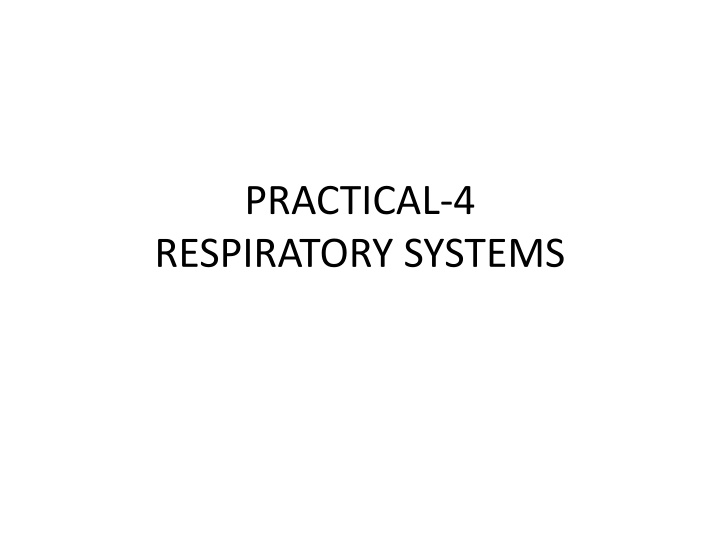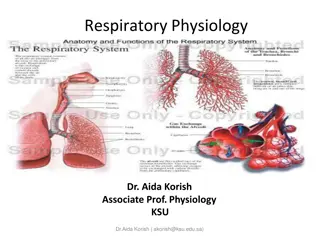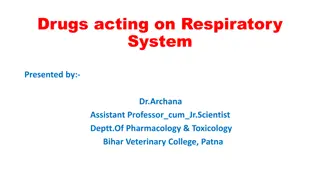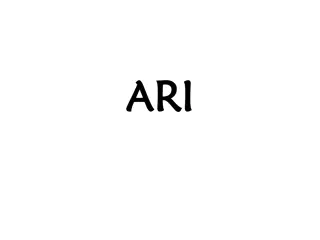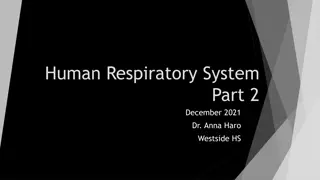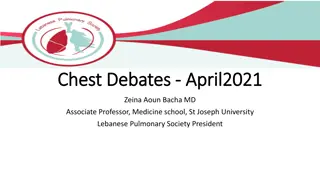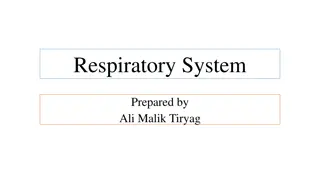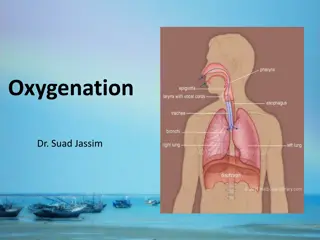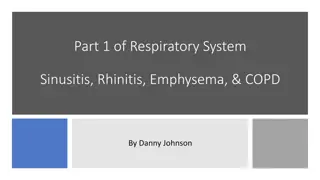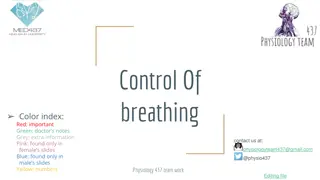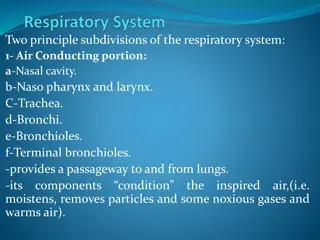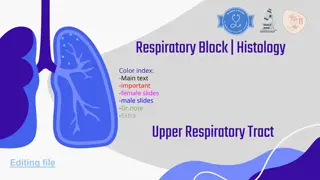Cockroach Respiratory System Overview
Cockroach respiratory system is tracheal-based, featuring stigmata for gas exchange. Trachea lead to tracheoles for oxygen transport to tissues. Tergo-sternal muscles aid in respiration, with inspiration expanding the body cavity for air intake and expiration expelling CO2. Control of respiratory movements is crucial in this well-developed system.
Download Presentation

Please find below an Image/Link to download the presentation.
The content on the website is provided AS IS for your information and personal use only. It may not be sold, licensed, or shared on other websites without obtaining consent from the author.If you encounter any issues during the download, it is possible that the publisher has removed the file from their server.
You are allowed to download the files provided on this website for personal or commercial use, subject to the condition that they are used lawfully. All files are the property of their respective owners.
The content on the website is provided AS IS for your information and personal use only. It may not be sold, licensed, or shared on other websites without obtaining consent from the author.
E N D
Presentation Transcript
PRACTICAL-4 RESPIRATORY SYSTEMS
Respiratory System : In cockroach respiratory system is well developed. The trachea play a vital role in the transport of respiratory gases hence respiratory system is also called tracheal system. The tracheal system includes a) Stigmata or spiracles b) Trachea c) Tracheoles a) Stigmata : Stigmata are respiratory openings in cockroach. They are 10 pairs in number. Among the stigmata 2 pairs are present in thoracic region and 8 pairs in the abdominal region. In cockroach stigmata arc present between mesothorax to 8th abdominal segment. In cockroach stigmata arc absent in protho- rax, 9th and 10th abdominal fragments. All the stigmata are present on lateral plates called pleura. The arrangement of stigmata in cockroach is holopneustic arrangement. All the spiracles are valvular Each stigmata is surrounded by annular sclerite called peritreme. Stigmata bears minute bristles in the inner margin. They prevent the entry of dust particles into tracheal system. Stigmata leads into small chamber called atrium. Atrium leads into trachea.
Trachea : The thoracic spiracles lead into several horizontal trachea, where as each abdominal spiracle leads into atria. From each abdonimal spiracle 3 tracheal tubes arise. All these tracheal tubes of one side open into three separate longitudinal tracheal trunks. They are lateral, dorsal and ventral longitudinal trunks. The three pairs of longitudinal tracheal trunks of both the sides are interconnected by many commissural tracheae The wall of trachca made up of 3 layers. Outer basement membrane, middle one cell thick epithelium and internally lined by intima which is chitinous layer. Intima produces spiral thickenings or chitinous rings called Taenidia. Taenidia present in trachea prevent the collapse of trachea. Tracheoles : The fine branches of trachea are called tracheoles. The trachcolc cell is the terminal structure of the tracheal tube ending close to the tissues. Taenidia are absent in tracheoles Tachcolcs arc internally lined by a protein called trachein. Tracheolar fluid is present inside the tracheoles the level of the tracheolar fluid varies with metabolic activity of the insect it is more when the insect is inactive and completely reabsorbed into the tissues when insect is more active.
Tergo-sternal muscles : In cockroach the muscles which help in respiration are called Tergo-sternal muscles. They are attached between tergal and sternal plates. Relaxation of tergosternal muscles helps in inspiration and contraction of tergosternal muscles helps in expiration. Mechanism of respiration : In cockroach respiration includes two phases (i) Inspiration and (ii) Expiration Inspiration : In take of atmospheric air or 02 into the tracheal system is called as inspiration. Inspiration is a passive process in cockraoch. Whenever tergosternal muscles relax, the space present in the body cavity increases and pressure decreases. Thoracic spiracles ARE kept open AND THE Abdominal spiracles ARE kept closed. Later, that air is carried towards tracheoles and diffuses into tissues through tracheolar fluid.. Due to metabolism C02 produced in tissues.
Expiration : Elimination of C02 is known as expiration. Whenever tergosternal muscles contract, the space present in body cavity decreases and pressure increases. Thoracic spiracles ARE closed AND abdominal spiracles ARE KEPT open. In cockroach major amount of C02 is sent out by diffusion method through cuticle. In cockroach respiratory movements are controlled and coordinated by nervous system. Expiration is a active process. Cockroach, Grasshoppers and Beetles exhibit the phenomenon of discontinuous ventilation. In this, exchange of gases is interrupted by extended periods during which spiracles arc closed. Opening and closing of spiracles is influenced by C02 tension in hacmolymph and oxygen tension in the tracheae.
